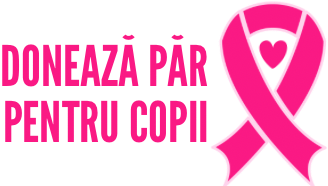Trauma is often associated with dramatic, visible events, but in reality, it can arise from a look, exclusion, or a seemingly small change. For children undergoing cancer treatment, hair loss is not only a physical consequence, but also a deeply emotional one. It is a loss of identity, normalcy, and belonging.
How Children Experience Hair Loss Trauma
When a child looks in the mirror and no longer recognizes themselves, the suffering goes beyond the fallen strands of hair. Hair, especially for girls, is a symbol of beauty, femininity, and social normality. A child without hair becomes—unwillingly—visibly different. And differences, as we know, can attract painful remarks, staring, and even rejection from other children.
Even in the best-intentioned environments, children who lose their hair may be marginalized or overly pitied. Both reactions are hard to endure. The child may ask themselves, “Why me? What did I do to deserve this? Are others afraid of me?” Beyond the harsh treatments, long hospital stays, and isolation, these children must also face a crisis of self-image and belonging.
Trauma Is Not Only Physical – It Is Social and Emotional
Hair loss can trigger feelings of shame, anxiety, anger, or helplessness. The child may refuse to leave the house, play with others, or even attend online lessons if viewed with pity or distrust. The trauma becomes complex, mixing physical pain with social stigma and loss of self-confidence.
At the same time, parents and siblings also feel the pain. Trauma is never just individual—it affects the whole family. Without constant psychological support, it can deepen over time, leaving scars that last for years.
Healing Goes Beyond What Meets the Eye
Fortunately, there are gestures that can transform pain into hope. A natural, discreet, and comfortable wig, closely resembling what the child had before illness, can mean a great deal. It is not just an “aesthetic accessory”—it is a bridge to normality, protection from judgment, and a way for the child to regain self-confidence and dignity.
The Hair Matching project generously transforms donated hair into natural wigs, tailored to each child. It is an act of deep empathy: donated hair becomes a silent but powerful form of healing.
Other Forms of Trauma – Invisible, Yet Real
Children may also experience trauma due to:
-
bullying,
-
loss of a loved one,
-
divorce,
-
abuse,
-
relocation or environmental changes,
-
accidents,
-
situations where one parent is abandoned by the other (often the mother),
-
discovering that a parent has cheated or is having an affair,
-
an arrogant, critical, or tense family atmosphere in which the child feels unloved or invisible,
-
or when a parent—usually the mother—becomes emotionally distant or absent from the child following betrayal or abandonment.
These invisible wounds deeply affect how a child sees themselves and relates to the world.
That is why adults—parents, teachers, guides, educators—must be attentive to signs of silence, withdrawal, and hidden sadness. They should not minimize the children’s pain but validate it and seek professional support when needed.

Make a Difference. Donate Hair. Restore Hope.
Children who lose their hair due to medical treatments need more than medicine—they need support, confidence, and love. Through a simple act, you can be part of their healing.
If you want to donate hair or get involved, please use one of the contact methods below:
👉 www.hairmatching.com/doneaza
or contact us directly at:
📩 office@hairmatching.com
📱 WhatsApp +4 0769 858 076
Together, we can help children smile again.
